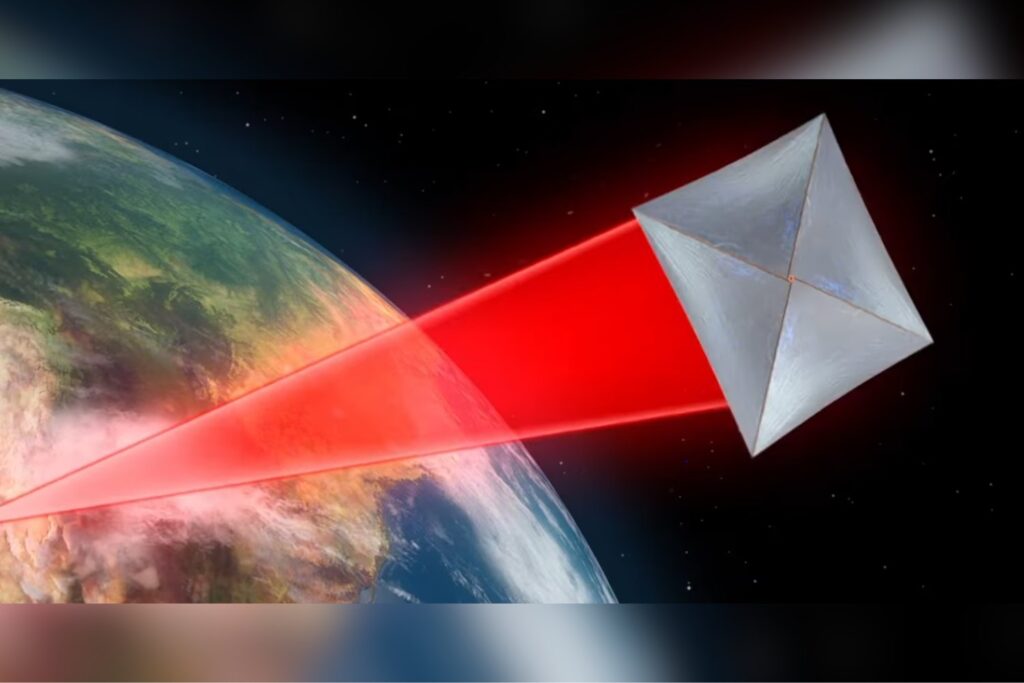A team of researchers at the California Institute of Technology devised a means to measure the thin membranes of a vision of light, helping to try a first futuristic travel concept. imagined By Johannes Kepler more than 400 years ago.
Team research, published This month in Nature photonicsDescribe a miniature vision in a laboratory environment. The researchers measured the radiation pressure in the candle of a laser beam, revealing how the material reacted to the laser beam. Ultimately, these findings will help develop lights ready for space, one of the most promising vehicles for interstellar trips, since they depend on an essentially unlimited energy source: light.
“There are numerous challenges involved in the development of a membrane that could ultimately be used as Viaille. You need to resist the heat, maintain its shape under pressure and travel stable along the axis of a laser beam, ”said Harry Atwater, a physicist of Caltech and corresponding author of the newspaper, in a Caltech release.
“We wanted to know if we could determine the force exerted on a membrane simply measuring its movements,” Atwater added. “It turns out that we can.”
In the study, the team interrogated a miniature vision, only 40 microns for 40 microns in area, made of silicon nitruro. The team issued a argon laser in visible wavelengths in the tied candle to see how it staggered and reacted to the heat generated by the laser. The team measured the movements of the candle on a picometer, down to billions one meter (3.4 feet).
“Not only do we avoid the effects of unwanted heating, but we also use what we learned about the behavior of the device to create a new way of measuring the force of light,” said co -author Lior Michaeli, a physical of Caltech, in the statement in the statement .
The team reported measurements of movements from side to side and rotation in the tail of light, an important capacity for when said device is promoting a vehicle through space. The space can be a vacuum, but it has many things floating around, from micrometeoroids to bursts of solar wind. These external phenomena can affect the performance of a light tail and potentially endanger a mission.
Lighttsils could be the future of space flight. Last year, Gizmodo awarded the Lightsail 2 of the Planetary Society at the Gizmodo Science Fair for the test of the photons viability experiment as a means of satellite propulsion. The 344 square feet candle (32 square meters) promoted a small spacecraft in what was finally a trip of 5 million miles (8 million kilometers) that covered 18,000 orbits.
In 2016, group progress initiatives proposed A fleet of spacecraft at the light of the light that could be accelerated to 20% of the speed of light, very fast. At such speeds, the spacecraft could reach Alpha Centauri, the star closest to Earth in addition to the sun, in just a couple of decades. Consequently, the advent of the spacecraft propelled by the light of light could cause the years away from light to be a less insurmountable obstacle to space trips.
Although the recent experiment was in a laboratory, it provides some small, but important, strive towards a functional light that could boost long trips to space.

